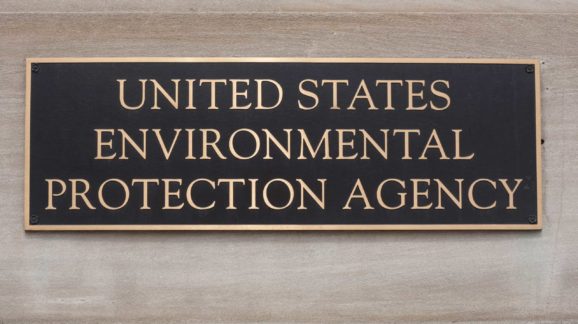EPA Follows Through on Biden Directive to Hide Guidance Documents from the Public

Photo Credit: Getty
Before President Joe Biden signed an executive order called Revocation of Certain Executive Orders Concerning Federal Regulation that, among much else, instructed federal agencies to delete guidance document portals established under Trump, I had tallied the existence of 73,424 documents across 60-plus agencies at this landing page. He also directed agencies to repeal any regulations written, as Trump had also instructed them to do, to formalize guidance document public input, preparation, and release.
Thirty-two agencies had issued such final rules on guidance (FROGs) before Biden took office, by my reckoning. And so far, 10 agencies have issued rules revoking their Trump-era guidance-prep procedures. (For detail on various agency shenanigans since January, see “Laws Have Mercy: Here Is How Biden Is Restricting Access To Regulatory Guidance Documents.”) But for present purposes, however, let’s look at one particularly interesting officially engineered setback in disclosure.
The Environmental Protection Agency (EPA) is the 10th and latest to “stomp its FROG,” so to speak, with its May 18 rule called “EPA Guidance: Administrative Procedures for Issuance and Public Petitions; Rescission”
The EPA revoked its Trump-era FROG procedures using the same, almost verbatim, boilerplate rationale that the Department of the Interior did:
After consideration and review, the EPA has concluded that the internal rule on guidance deprives the EPA of necessary flexibility in determining when and how best to issue public guidance based on particular facts and circumstances, and unduly restricts the EPA’s ability to provide timely guidance on which the public can confidently rely. Therefore, in accordance with E.O. 13992, the EPA is issuing this final rule to rescind. …
Someone appears to be coordinating these across the departments and agencies, although some agencies were not as obvious. But these about-faces all have a practical effect that cuts against the public interest.
Let’s stick with the EPA. In the wake of Trump’s now-deleted Executive Order 13891 of October 9, 2019, “Promoting the Rule of Law through Improved Agency Guidance Documents,” I eventually (it took some months) counted 9,811 guidance documents at the EPA, spread among the sub-agencies.
At the direction of Biden and with today’s FROG revocation, the EPA has now removed ease-of-visibility of these guidance documents.
The EPA tries to excuse the obscuring of important information by claiming that:
The EPA will continue to make Agency guidance available to the public on the Agency’s website at https://www.epa.gov. In addition, the EPA will comply with all statutory obligations pertaining to posting documents for public accessibility.
Pardon our disbelief. When I compiled the 2017 “Mapping Washington’s Lawlessness” paper attempting to assess guidance documents prior to Trump’s executive order, I counted (only) 193 significant EPA guidance documents, and found lesser ones’ magnitude indeterminate. There was no way to know even what they were called. Such lack of clarity was part of the reason we took to referring to sub-regulatory guidance as “dark matter.”
Unlike its present assurance, the pre-Trump EPA offered no warranties of completeness:
Please be aware that the lists do not include every guidance document issued by EPA. They only encompass those documents that are “significant” as defined by the [Office of Management and Budget Good Guidance Practices] Bulletin.
I promise the page explaining this existed, but now the link, https://www.epa.gov/laws-regulations/significant-guidance-documents, is broken.
The EPA seems to be counting on no one remembering this hedging. Nor are folks likely to remember a 2018 House Oversight Committee report called Shining Light on Regulatory Dark Matter, which requested an inventory of guidance documents from resistant agencies. In that report, 27 agencies provided complete responses (including two claiming no guidance documents). Eleven gave partial responses, while eight ignored the committee altogether.
Capturing a work in process, agencies on the whole reported having issued over 13,000 guidance documents since 2008, with 536 of these acknowledged as “significant guidance documents.” In the wake of the report and using its complicated and non-uniform appendices to recreate the count, we compiled a table containing something over 12,000 documents, of which just 16 had been reported from the EPA.
That chaos was the state of things prior to Trump’s order. We knew of maybe 13,000 documents since 2008 on the whole, with no comprehension of what EPA really had, or where to find them. With Trump, by contrast, we learned of an even-still incomplete and still being constructed inventory of over 73,000, including thousands, now apparently vanished (again), at the EPA.
Congress will need to address the matter, something especially important since frontier technologies are vulnerable to being regulated by guidance, and, as Biden’s American Rescue, Jobs, and Families Plans promises, ceaseless forthcoming governance-by-guidance.